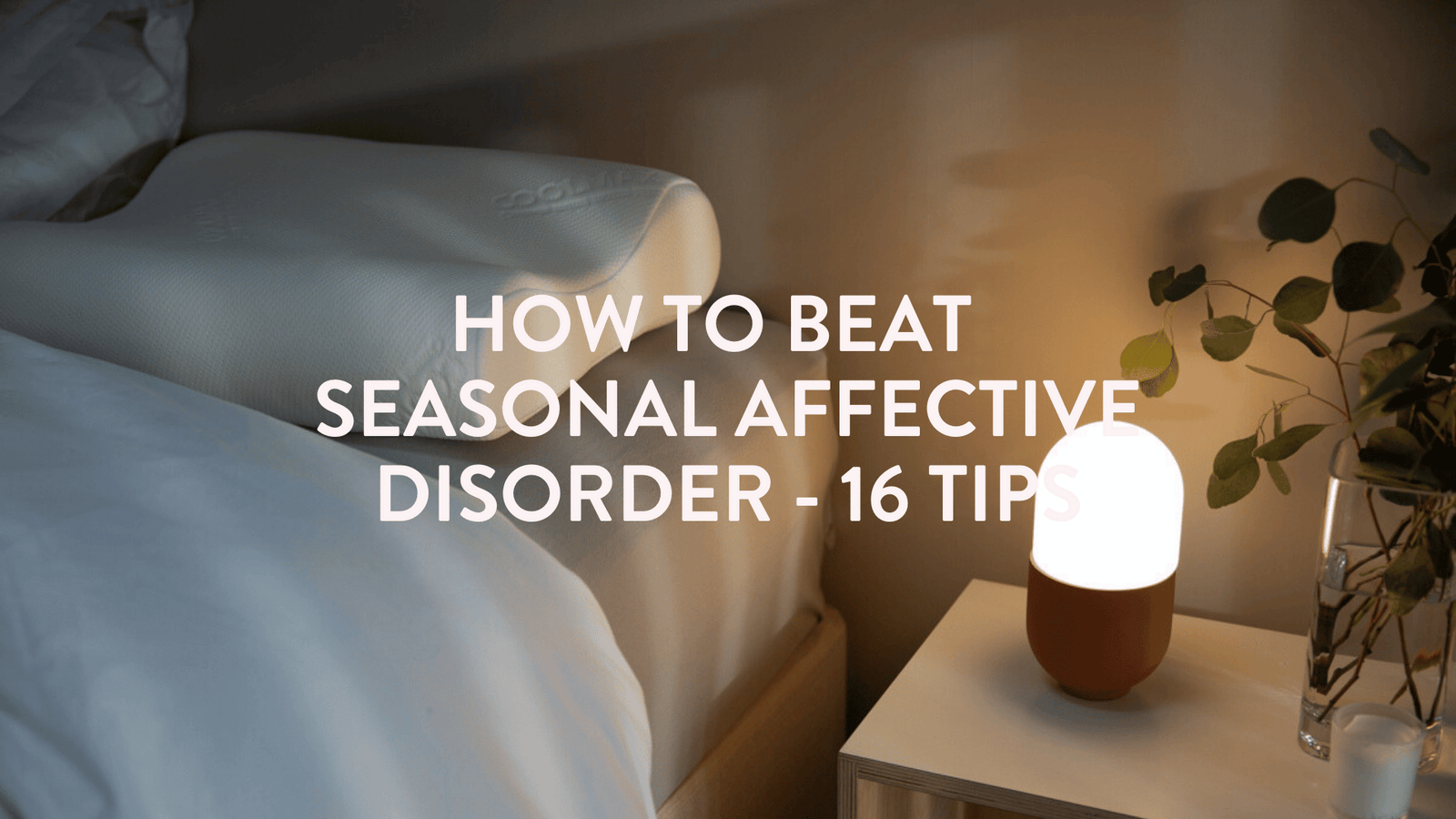
Unmasking Seasonal Affective Disorder: Your 16-Step Guide to a Brighter Winter
When leaves start to fall and the days grow shorter, a significant number of us begin to feel the winter blues creeping in. This feeling is more than just disliking the cold weather; it's a type of depression known as Seasonal Affective Disorder (SAD) and is detailed by the Diagnostic and Statistical Manual of Mental Disorders DSM-5
Often striking in autumn and winter months, SAD is linked to reduced natural sunlight.
But don't despair; this post will shed some light on 16 strategies to help you combat SAD effectively.
1. Let There Be Light: Invest in a Light Therapy Box

Credit Raw_Images Pixabay
Light therapy boxes, also known as phototherapy boxes, are devices designed to mimic outdoor light. They produce a bright light that is typically several times stronger than regular indoor lighting.
The idea behind using a light therapy box is to replace the diminished sunshine of the fall and winter months and to regulate your body's internal biological clock (or circadian rhythm).
The light from these boxes is significantly brighter than that of standard incandescent or fluorescent light bulbs.
While exposure to such bright light might seem intimidating at first, it's this intensity that can help to regulate your body's sleep-wake cycle and reset your internal clock.
When you sit near a light therapy box — the device should be at eye level and to the side to limit glare — it emits light that mimics natural outdoor light. This type of light exposure is believed to affect brain chemicals linked to mood, easing Seasonal Affective Disorder (SAD) symptoms.
Using a light therapy box may also help with other types of depression, sleep disorders and other conditions.
It's important to note that when starting light therapy, timing, duration, and consistency matter. You would typically use a light therapy box for about 20-30 minutes each day, ideally in the morning.
However, the exact timing and duration can vary, so it's best to consult with a healthcare professional before starting light therapy.
Moreover, not all light boxes are created equal. Some may emit higher levels of UV light, which could be harmful. Look for a light therapy box that emits as little UV light as possible.
Finally, while light therapy can be an effective treatment option for SAD, it's not for everyone. Some people may find it causes eyestrain, headaches, or even mania in individuals with bipolar disorder.
As always, it's crucial to discuss any new treatment with a healthcare provider to ensure it's a safe and effective option for you.
2. Embrace the Daylight
Even on cloudy days, spending time outdoors during daylight hours can be a potent mood booster.

Credit Jill Wellington Pixabay
Physical activity is a potent tool in combating Seasonal Affective Disorder (SAD). It's not just about the physical benefits; exercise can also significantly impact your mental health by boosting serotonin levels and, in turn, lifting your mood.
Serotonin is a neurotransmitter that plays a crucial role in regulating mood, sleep, appetite, and overall happiness. When you engage in physical activity, your body produces more serotonin, which often leads to an improved state of mind.
There are numerous ways you can incorporate physical activity into your daily routine. Here are a few suggestions:
- Outdoor Activities: If the weather permits, consider outdoor activities like walking, jogging, cycling, or even gardening. Not only will you benefit from the exercise, but the exposure to natural light can also help regulate your sleep-wake cycle and boost your mood.
- Home Workouts: On those days when it's too cold or dark to venture outside, home workouts can be a great alternative. There are plenty of online resources offering free workout videos catering to all fitness levels. From high-intensity interval training (HIIT) to pilates, there's something for everyone.
- Yoga: Yoga can be particularly beneficial in managing SAD symptoms. It combines physical postures, breathing exercises, and meditation, promoting both physical and mental wellbeing. Plus, it can be done indoors, making it a perfect option for those frosty winter days. Check out some Yoga Near You and start today.
- Join a Gym or Fitness Class: For some, the social aspect of joining a gym or attending a fitness class can provide additional motivation and combat feelings of isolation common in SAD and winter depression sufferers.
- Active Commuting: If possible, consider walking or cycling to work instead of driving or taking public transportation. It's an easy way to fit exercise into your busy schedule.
Remember, the key is consistency.
Aim for at least 30 minutes of moderate-intensity exercise most days of the week. But always listen to your body and don't push yourself too hard.
It's about feeling better, not adding extra stress.
As you embark on your fitness journey, don't forget the importance of comfort. Whether you're stretching out on a yoga mat or resting your head after a long day, Putnams has a range of products designed with your comfort in mind.
Visit our website or connect with us on social media to learn more. And remember, no matter where you are in the world, from Albania to Andorra, Canada to China, Putnams has got your comfort covered.
Check out our international shipping options and find your perfect pillow today!
3. Move More: The Endorphin Effect
Regular exercise is one of the most effective ways to combat the mood disorder, Seasonal Affective Disorder (SAD).
It's not just about physical fitness; physical activity can have a profound impact on your mental wellbeing, too. When you exercise, your body releases endorphins, chemicals that act as natural mood lifters. It is not unusual for SAD to be referred to as a mood disorder triggered by the changes in seasons.

Credit Emma Simpson Unsplash
Endorphins are neurotransmitters produced in the brain's hypothalamus and pituitary gland.
They're often referred to as the body's "feel-good" chemicals because they create a positive feeling in the body, similar to that of morphine.
When you engage in physical activities, the level of endorphins in your bloodstream increases, leading to what's commonly known as a 'runner's high'.
But the good news is, you don't need to be a marathoner to experience this.
Here are some ways to incorporate more movement into your daily routine:
- Home Workouts: You don't need a gym membership to get active. There are many exercises you can do from the comfort of your home. Consider investing in a few basic items like a yoga mat or resistance bands to diversify your workouts.
- Office Exercise: If you spend long hours at a desk, consider incorporating some simple exercises into your workday. Stretching, standing, or even doing some light yoga can help loosen your muscles and increase blood flow. Our range of office cushions can provide additional support and comfort during these mini workout sessions.
- Outdoor Activities: Walking, jogging, cycling - these are all great ways to get moving while also getting a dose of fresh air and sunlight. Just be sure to dress warmly if the weather is cold!
- Yoga and Pilates: These mind-body exercises combine stretching with focus on breathing and can help reduce stress and anxiety while improving flexibility and strength.
- Household Chores: Believe it or not, chores like cleaning, gardening, or even washing the car can burn a significant number of calories. Turn on some music and make it fun!
It's crucial to choose an activity you enjoy, as you're more likely to stick with it. Whether it's dancing in your living room, attending a local fitness class, or going for a brisk walk around the neighbourhood, any movement is better than none.
And remember, comfort is key! If you're exercising at home, consider our mattress toppers for added support during floor exercises or yoga.
Or if you're venturing outdoors, don't forget to take along one of our travel seat cushions for a comfortable rest stop.
Remember, lack of energy and feelings of sadness are both primary symptoms of SAD that can be dealt with simply with exercise.
Whatever your fitness level, there's an exercise option out there for you. So get moving, release those endorphins, and lift your mood naturally!
4. Eat Right: The Impact of a Balanced Diet

Credit Farhad Ibrahimzade Unsplash
The food we eat plays a pivotal role not only in our physical health but also our mental wellbeing.
Consuming a balanced diet rich in fruits, vegetables, and whole grains can help keep your mood steady and ward off symptoms of Seasonal Affective Disorder (SAD).
A diet rich in fruits and vegetables provides essential vitamins, minerals, and antioxidants that are known to boost mood and energy levels.
Whole grains, on the other hand, are a great source of complex carbohydrates that provide sustained energy and help maintain stable blood sugar levels, preventing mood swings.
It's also advisable to avoid excessive sugar and processed foods. These foods can cause fluctuations in your blood sugar levels, leading to mood swings. They also lack the essential nutrients needed for overall health and wellbeing.
Here are some simple tips to maintain a balanced diet:
- Plan Your Meals: Plan your meals and snacks ahead of time to ensure you're getting a variety of nutrients throughout the day.
- Stay Hydrated: Drink plenty of water throughout the day. Dehydration can lead to fatigue and irritability.
- Eat Regularly: Skipping meals can lead to low blood sugar, which can trigger mood swings and fatigue. Try to eat small, balanced meals and snacks every three to four hours.
- Include Protein: Include good sources of protein in your diet such as lean meat, fish, eggs, or plant-based proteins like lentils and chickpeas. Protein helps to keep you feeling fuller for longer and can also help regulate mood. Good sources of protein.
- Limit Caffeine: Too much caffeine can interfere with sleep patterns and increase feelings of anxiety and depression.
While eating right is an important part of maintaining good health, comfort is key when it comes to ensuring a good night's sleep.
Putnams, a UK-based company, offers a range of products designed with your comfort in mind. From pillows to mattress toppers, every product is handmade in Devon and available for fast shipping across the UK and internationally.
And don't forget to follow us on Instagram, Facebook, YouTube, Twitter, and LinkedIn for the latest news, discounts, and promotions. Plus, subscribe now and get 10% off your first order!
Remember, a balanced diet coupled with regular physical activity and a comfortable sleeping environment can significantly help manage and even prevent SAD symptoms.
So eat right, move more, and sleep well with Putnams.
5. Supplement with Vitamin D: The Sunshine Vitamin
Sun exposure is our primary natural source of Vitamin D, often referred to as the 'sunshine vitamin'.
However, during the colder months when daylight hours are shorter and we spend more time indoors, our exposure to the sun can be significantly reduced. This decrease in sunlight can lead to Vitamin D deficiency, which is common in people suffering from Seasonal Affective Disorder (SAD).

Credit Alxander Shustov Unsplash
Vitamin D plays an essential role in our body.
It aids in the absorption of calcium, promoting bone health, and contributes to the functionality of our immune system. But perhaps most relevant to SAD, Vitamin D also impacts our mood.
Studies suggest a link between low levels of Vitamin D and symptoms of depression.
Considering these factors, supplementation with Vitamin D can be beneficial, particularly for those with SAD or those who live in areas with limited winter sunlight. Simply by understanding SAD empowers people to cope more readily with the disorder.
It's always best to consult a healthcare provider before starting any new supplement regimen, but here is some general advice:
- Choose the right form: Vitamin D3 is the preferred form as it's more effectively used by our bodies compared to Vitamin D2.
- Recommended dosage: The recommended daily intake can vary depending on your age, diet, and sun exposure. Generally, a dose of 400-800 IU (International Units) is often adequate for most adults, although some may need higher doses.
- Consistency is key: Regular intake is crucial to maintain optimal Vitamin D levels. Consider setting a daily reminder to take your supplement.
While supplementing with Vitamin D can help manage and even prevent SAD symptoms, it's just one piece of the puzzle. A balanced diet, regular physical activity, and a comfortable sleeping environment are also critical.
Do not be put off with people dismissing the condition as it is a major depressive disorder with a seasonal pattern that requires considerable attention.
6. Explore Cognitive-Behavioural Therapy (CBT): Rewiring the Mind
Cognitive-Behavioural Therapy (CBT) is a form of talk therapy that can play an integral role in managing and overcoming Seasonal Affective Disorder (SAD).
This form of therapy helps you understand how your thoughts and feelings influence your behaviours. It's based on the idea that negative actions or feelings are the result of current distorted beliefs or thoughts, rather than unconscious forces from the past.

Credit Dim Hou Unsplash
CBT can help you learn coping strategies to manage your symptoms and change negative thought patterns that may be contributing to your SAD.
It enables you to replace negative thought patterns with positive ones, ultimately helping to improve your mood and reduce feelings of depression.
Here's how CBT generally works:
- Identification of Negative Patterns: The first step in CBT is recognizing the negative thought patterns and beliefs that are contributing to your feelings of depression or anxiety.
- Challenging Negative Thoughts: Once these patterns are identified, the therapist will encourage you to examine them and challenge their validity.
- Replacing Negative Thoughts: The final step involves replacing negative thoughts with positive ones. This process is often referred to as cognitive restructuring.
CBT sessions can be conducted one-on-one, in groups, or even online, making it a versatile treatment option.
Remember, it's important to consult with a healthcare professional before starting any new treatment plan.
While exploring CBT, remember that overall wellness involves a holistic approach. A balanced diet, regular physical activity, adequate Vitamin D levels, and a comfortable sleeping environment are also essential in managing SAD.
Putnams is here to cover the comfort aspect of your wellness journey.
We offer a broad range of products, from pillows filled with British wool, organic buckwheat hulls, graphite latex, foam, and memory foam to mattresses & toppers and a variety of sitting comfort products.
The Putnams Apothecary range also offers that added comfort to help you drift off faster. Our offerings are designed with your comfort in mind and are handmade in Devon, UK.
Managing SAD involves a holistic approach – explore CBT, supplement wisely, eat right, move more, and sleep comfortably with Putnams.
7. Consult About Medication: A Possible Solution to Seasonal Affective Disorder SAD
While lifestyle changes and therapies can significantly help manage Seasonal Affective Disorder (SAD) symptoms, in some cases, these might not be enough. That's where medication comes into the picture.
Antidepressant medications have proven effective in treating SAD and can be a viable option for those experiencing severe symptoms.

Credit Patty Brito Unsplash
Antidepressants work by balancing chemicals in your brain that affect mood and emotions. These medications can help improve mood, sleep, appetite, and concentration.
However, it's important to note that they are not a 'quick fix' but rather part of a comprehensive treatment plan which may also include light therapy, cognitive-behavioural therapy, and lifestyle modifications.
Here are some critical points to remember when considering antidepressant medications:
- Consult a Healthcare Professional: Always consult a healthcare professional before starting any new medication. They will consider your medical history, current health status, and the severity of your symptoms before prescribing the appropriate medication.
- Side Effects: All medications have potential side effects. It's crucial to discuss these with your healthcare provider to understand the risks and benefits of the proposed treatment.
- Patience is Key: Antidepressants often take several weeks to start working, so patience is required. Regular follow-ups with your healthcare provider during this period are essential to monitor progress and adjust the treatment plan as needed.
- Never Stop Suddenly: If you decide to stop taking antidepressants, it should be done under the supervision of a healthcare provider as stopping abruptly can lead to withdrawal symptoms or a relapse of SAD.
While medication can be an effective component in managing SAD, remember that overall wellness involves a holistic approach.
A balanced diet, regular physical activity, adequate Vitamin D levels, cognitive-behavioural therapy (CBT), and a comfortable sleeping environment all play a role in maintaining mental health.
Managing SAD involves a comprehensive approach – consult about medication, explore CBT, supplement wisely, eat right, move more, and sleep comfortably with Putnams. Remember, there is help available, and you're not alone in this journey.
8. Stay Social: The Power of Connection in Combating SAD

Credit Vonecia Carswell Unsplash
In the midst of the cold, gloomy winter months when Seasonal Affective Disorder (SAD) tends to strike, it's easy to feel isolated and alone.
However, one of the most effective ways to combat these feelings is by staying social and leaning on your support system.
Interacting with friends and family can provide a much-needed boost to your mood, alleviating feelings of isolation and sadness. It's not just about having people around you, but about meaningful connections that make you feel understood and valued.
Here are some ways you can stay social during the difficult winter months:
- Virtual Gatherings: If the cold weather or current health guidelines prevent you from meeting in person, why not arrange a virtual get-together? Video calls can be a great way to catch up with friends and family members, even if they're far away.
- Join Online Communities: There are numerous online communities centred around hobbies, interests, and support groups. These platforms can be a great way to interact with like-minded individuals and can often lead to lasting friendships.
- Volunteer: Volunteering your time to help others can also be a rewarding way to socialize. Not only does it allow you to make new connections, but it also provides a sense of purpose that can counteract feelings of depression.
- Stay Active on Social Media: Engage with friends and family on social platforms. Share updates, leave comments, and participate in discussions. Putnams is active on Instagram, Facebook, YouTube, Twitter, and LinkedIn. Follow us for the latest news, discounts, promotions and enjoy our ever expanding Putnams community.
Subscribe to our newsletter for 10% off your first order and join our community of over 4700+ verified reviewers!
9. Establish a Routine: The Power of Regularity in Managing SAD
Seasonal Affective Disorder (SAD) can disrupt your daily life, causing feelings of depression, lethargy, and mood swings.
One effective way to combat these symptoms and regain control is by establishing a routine — particularly focusing on regular sleep and meal times.

Credit Estee Janssens Unsplash
Setting a consistent schedule for when you wake up, eat, work, exercise, socialize, and sleep can help regulate your body's internal clock, stabilize your mood, and improve your overall wellbeing. Here's how:
- Regular Sleep Times: A consistent sleep schedule helps regulate your body's natural sleep-wake cycle, promoting better sleep and reducing fatigue. Aim to go to bed and wake up at the same time each day, even on weekends. To enhance your sleep quality, consider investing in comfortable bedding products like those offered by Putnams. Our range of pillows, bed wedges, and duvets are designed with your comfort in mind, ensuring you get the restorative sleep that's crucial for managing SAD.
- Consistent Meal Times: Regular meal times can help stabilize your blood sugar levels, preventing mood swings and energy slumps. Try to eat balanced meals at regular intervals throughout the day. Including foods rich in Vitamin D, like fatty fish or fortified dairy products, can also be beneficial, as Vitamin D deficiency has been linked to SAD.
Incorporating regular physical activity into your routine can also be highly beneficial.
Exercise releases endorphins, often referred to as 'feel-good hormones', which can help lift your mood and counteract the symptoms of SAD.
10. Practice Mindfulness: Harnessing the Power of Presence to Manage Seasonal Affective Disorder SAD

Credit Artem Beliaikin Unsplash
Seasonal Affective Disorder (SAD) can often lead to increased stress and anxiety, making day-to-day life challenging.
One powerful tool that can help manage these symptoms is mindfulness. Techniques like mindfulness meditation, deep breathing, and yoga have been shown to reduce stress, improve mood, and enhance overall wellbeing.
Mindfulness involves focusing on the present moment without judgment. It encourages you to experience each moment as it unfolds, rather than dwelling on the past or worrying about the future. Here's how you can incorporate mindfulness into your daily routine:
- Mindfulness Meditation: This form of meditation involves focusing on your breath and observing your thoughts without getting caught up in them. You can start with just a few minutes each day and gradually increase as you become more comfortable with the practice.
- Deep Breathing: Deep, controlled breathing can help calm the mind and body, reducing stress and promoting relaxation. Try incorporating a few minutes of deep breathing into your day – perhaps in the morning to start your day calmly, or in the evening to help wind down before bed.
- Yoga: Yoga combines physical postures, breathing exercises, and meditation. It can help reduce stress, improve flexibility and balance, and promote a sense of peace and calm. There are plenty of online resources and classes available to help you get started.
Remember, while practicing mindfulness can significantly help manage SAD symptoms, overall wellness involves a holistic approach.
Establishing a routine, staying social, considering medication consultation, exploring Cognitive-Behavioural Therapy (CBT), supplementing wisely, and creating a comfortable sleeping environment all play a role in maintaining mental health.
Overcoming Seasonal Affective Disorder (SAD) requires a multifaceted strategy – it's about practicing mindfulness, cultivating a regular routine, maintaining social connections, seeking medical advice when necessary, exploring Cognitive-Behavioural Therapy (CBT), making wise dietary choices, staying active, and ensuring restful sleep. With Putnams, you have a trusted partner on this journey towards better mental health.
11. Combatting Seasonal Affective Disorder (SAD): Prioritize Sleep for Enhanced Mood and Energy Levels

Credit Dieter Robbins Pixabay
In the face of Seasonal Affective Disorder (SAD), it's crucial to prioritize one of the most fundamental aspects of our well-being - sleep.
Quality sleep and proper sleep hygiene can significantly improve mood and energy levels, acting as a natural antidote to symptoms of SAD.
Putnams, a UK based company specializing in sleep and wellness, understands the transformative power of restful sleep. We offer a diverse range of products tailored to promote quality sleep and enhance your comfort.
Our product line ranges from pillows and bed wedges to mattresses and toppers, all designed with the goal of providing you a restful night's sleep. Notably, our Putnam pillow has been widely acclaimed for its comfort and support.
Our products are filled with materials like British wool, organic buckwheat hulls, graphite latex, foam, and memory foam, all curated to ensure your ultimate comfort. Plus, we offer foam-related services, including sofa cushion foam, foam cut to size, foam sheets, foam profiling, foam grades, and upholstery supplies.
Whether you're seeking solutions for a comfortable sleep environment, office comfort, or travel necessities, our products cater to a wide array of needs. Handmade in Devon, UK, each product is a testament to our commitment to quality and customer satisfaction.
With over 4700+ verified reviews, Putnams is a trusted name in the field of sleep and wellness.
12. Limit Alcohol and Caffeine: Essential Steps for Better Sleep and Mood Stability

Credit Engin_Akyurt Pixabay
In the battle against Seasonal Affective Disorder (SAD), it's important to recognize the role our lifestyle choices play.
Specifically, the consumption of alcohol and caffeine can have a significant impact on our sleep patterns and mood stability.
Both alcohol and caffeine have the potential to disrupt our sleep. While they might seem like harmless elements of our daily routines, overconsumption can lead to restlessness, insomnia, and even trigger mood swings. Therefore, moderation is key.
13. Set Achievable Goals: The Key to Preventing Overwhelm and Boosting Productivity
In the hustle and bustle of our daily lives, it's easy to feel overwhelmed by the sheer volume of tasks we need to accomplish.
One effective strategy to combat this is setting achievable goals by breaking down tasks into manageable steps.

Credit Photo by Kyle Glenn on Unsplash
Always have a plan it is guaranteed to help you through those restless nights simply knowing the following day's tasks are achievable!
Remember, setting achievable goals isn't just about boosting productivity—it's also about reducing stress and enhancing overall well-being.
At Putnams, we're here to support you in this journey, providing the products and resources you need to rest better, live better, and achieve your goals.
14. Follow Your Joy: Engage in Activities and Hobbies That Bring Happiness and Fulfillment
In life, it's essential to make time for activities and hobbies that bring us joy and fulfillment.
Engaging in things we love can significantly improve our mood, reduce stress levels, and contribute to overall well-being. This principle is especially important when dealing with conditions like Seasonal Affective Disorder (SAD).

Credit stevepb Pixabay
At Putnams, a UK-based company specializing in sleep and wellness, we understand the power of joy in enhancing one's quality of life. We believe that comfort and relaxation are fundamental to enjoying your hobbies and activities to the fullest.
Whether your hobby involves reading, watching movies, knitting or even just relaxing in bed, our products are there to support you. For instance, our bed wedges and pillows can enhance your comfort as you engage in these activities.
Remember, following your joy is not just about doing what you love - it's about creating an environment that allows you to do so comfortably and happily.
At Putnams, we're here to support you in this journey by providing products that enhance your comfort and contribute to your overall well-being.
15. Seek Professional Help: Reach Out to a Therapist or Psychiatrist When Needed
Life can be challenging, and sometimes these challenges can lead to persistent or worsening symptoms of stress, anxiety, depression, or other mental health issues. In such situations, it's crucial not to hesitate to seek professional help.
Therapists and psychiatrists are trained to help you navigate these difficulties and improve your quality of life.
While our products and services contribute to physical comfort, we understand that mental comfort is equally important.
It's why we encourage anyone experiencing persistent or worsening symptoms of mental distress to seek professional help.
Therapists and psychiatrists can provide the necessary guidance and treatment options to help you manage your mental health.
Remember, seeking professional help when you need it is not a sign of weakness, but a step towards improved mental health.
At Putnams, we support this wholeheartedly and are here to provide comfort along the way with our range of sleep and wellness products. MIND offer some great contacts for everyone through these darker times.
16. Understanding SAD (Seasonal Affective Disorder): Empower Yourself to Manage It Effectively

Credit Alessandro Ernetta Unsplash
Seasonal Affective Disorder (SAD) is a type of depression that comes and goes with the seasons. It typically starts in late autumn or early winter and goes away during the spring and summer.
Understanding this condition can empower you to manage it effectively and maintain your mental health year-round.
Remember, understanding SAD is the first step towards managing it effectively. At Putnams, we're here to support you in this journey by providing products that enhance your comfort and contribute to your overall well-being.
Remember, SAD is a treatable condition. The effectiveness of these strategies will vary between individuals, so it is essential to consult with a healthcare provider to develop a personalised treatment plan tailored to your needs.
And while you're focusing on your mental wellness, don't forget about physical comfort. Check out our range of sleep products here, designed to provide you with the restorative sleep you need to help combat SAD. Lighten up your winter with these tips and enjoy a brighter, happier season!



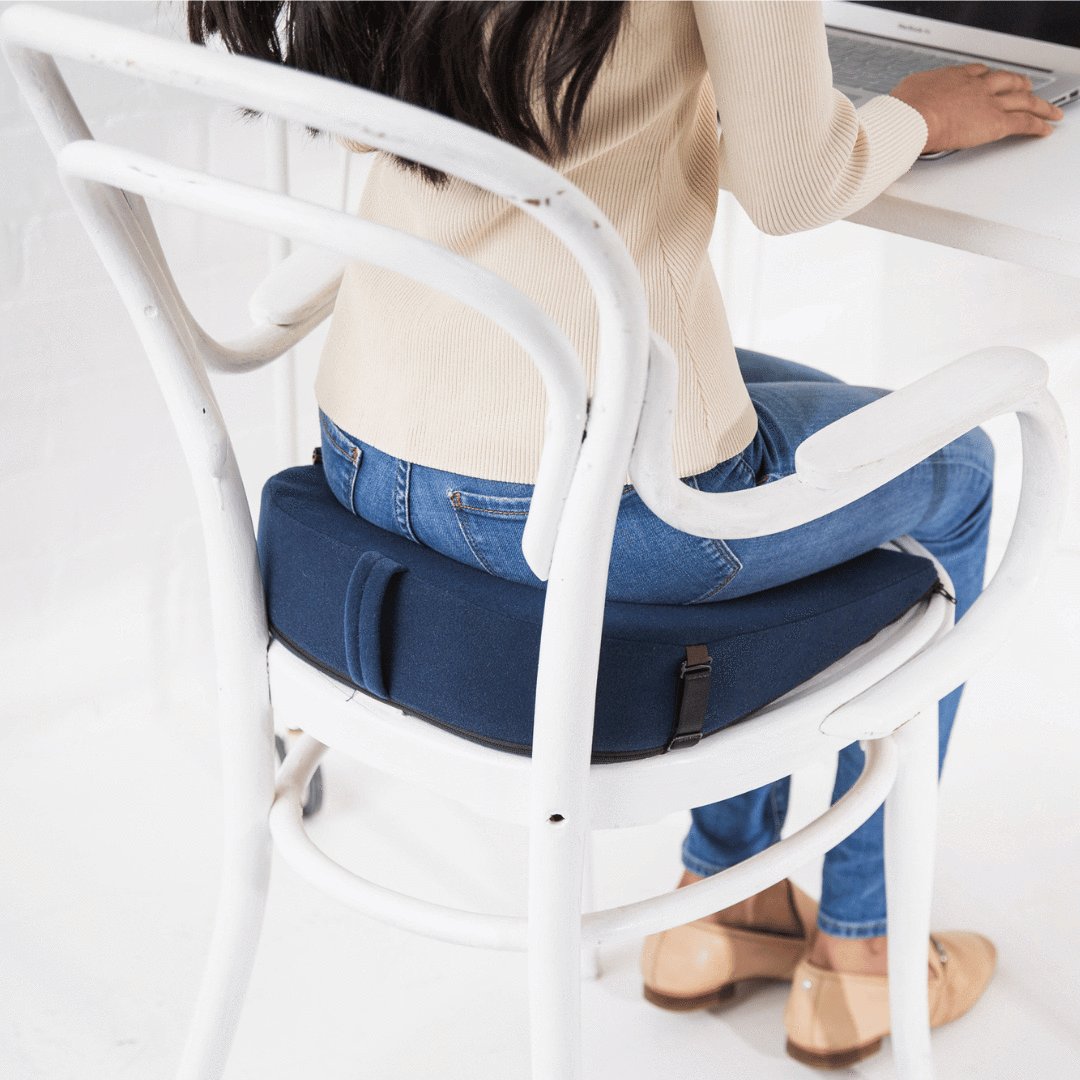




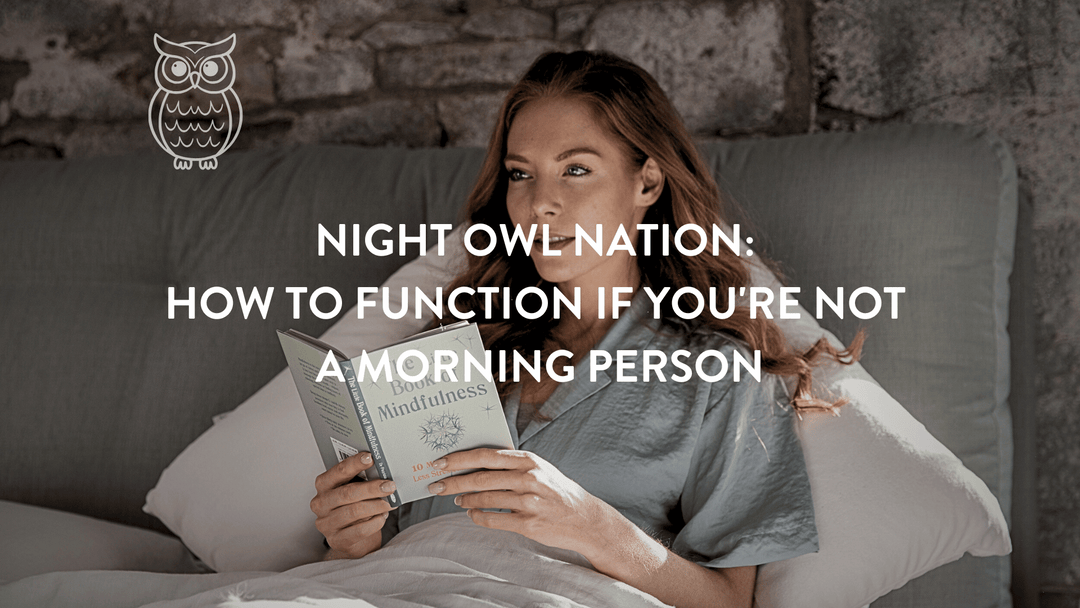
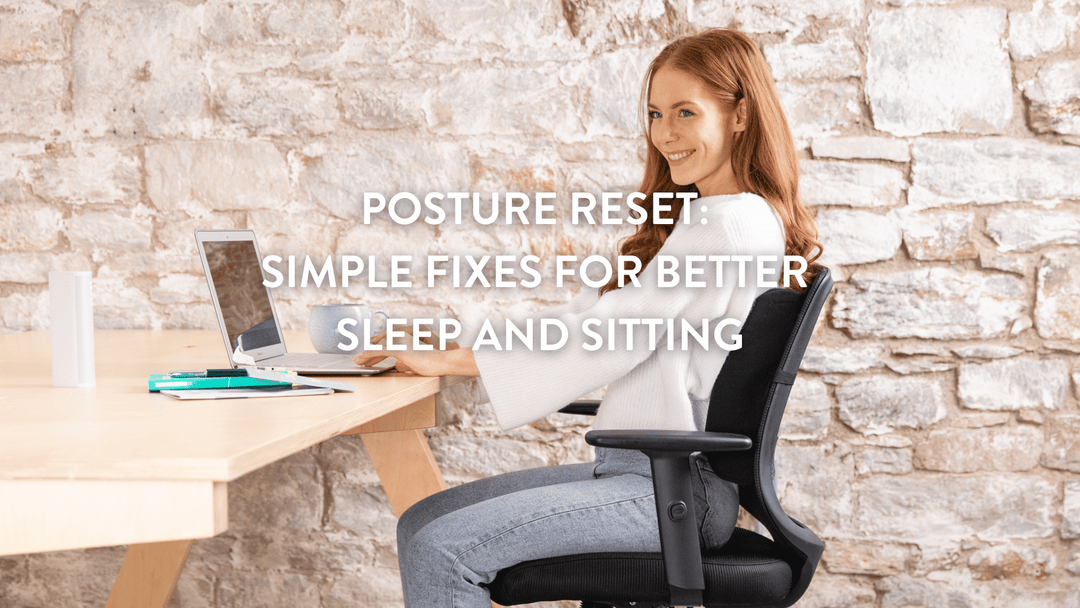
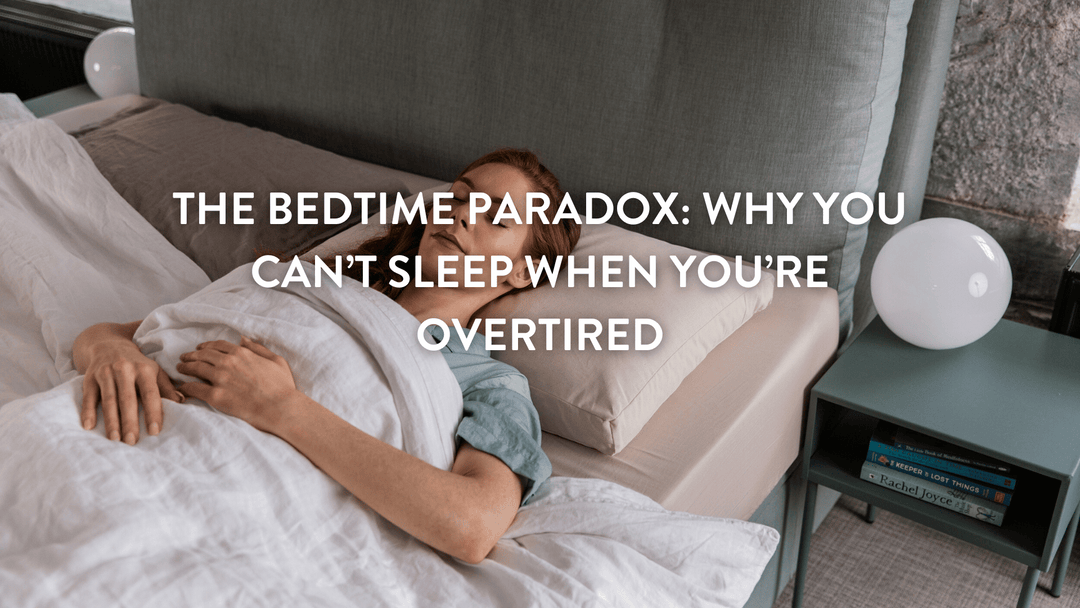
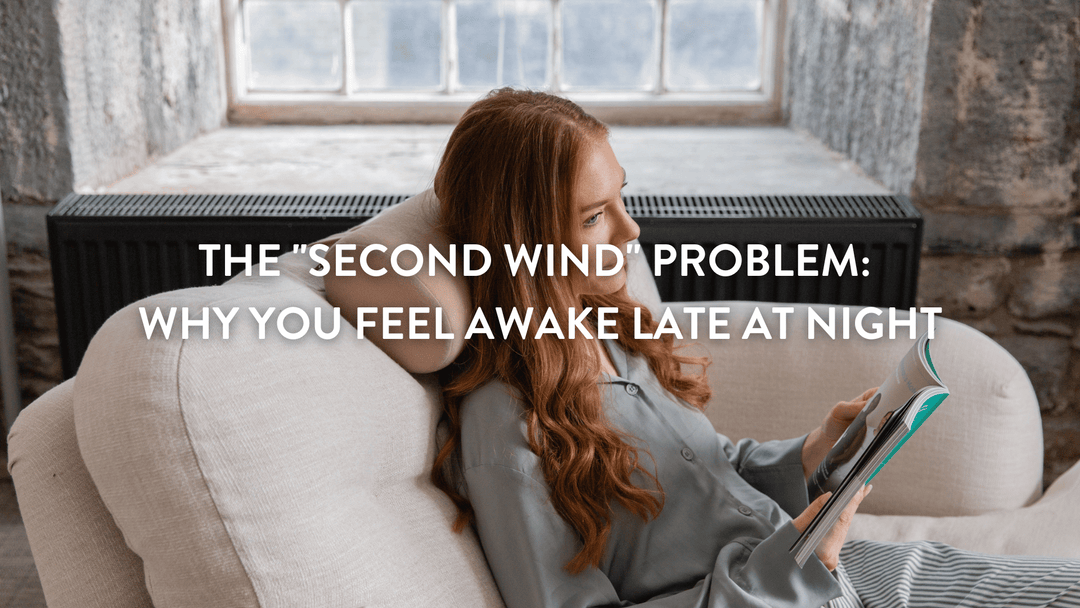
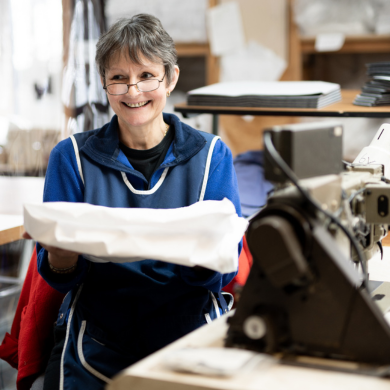


Leave a comment